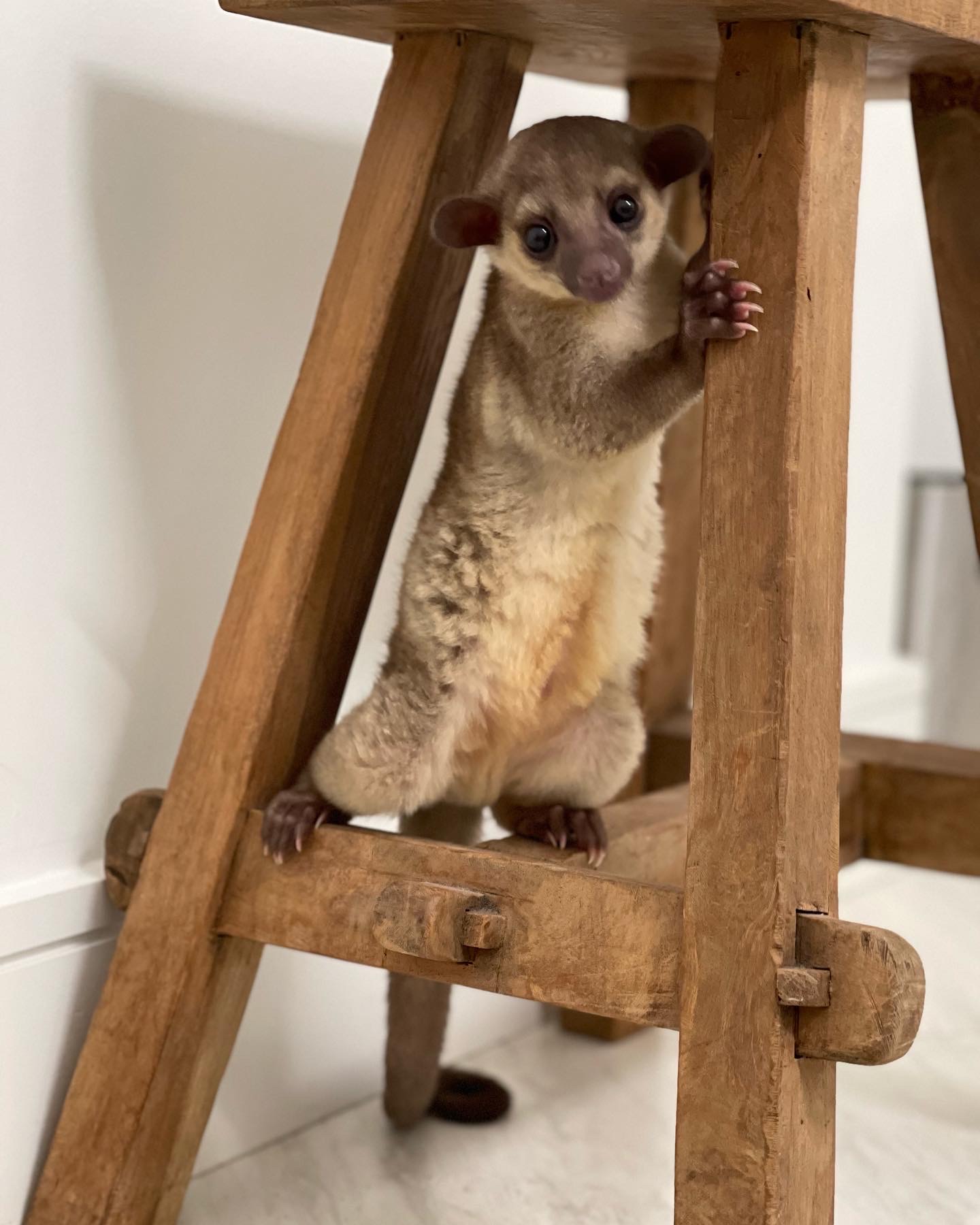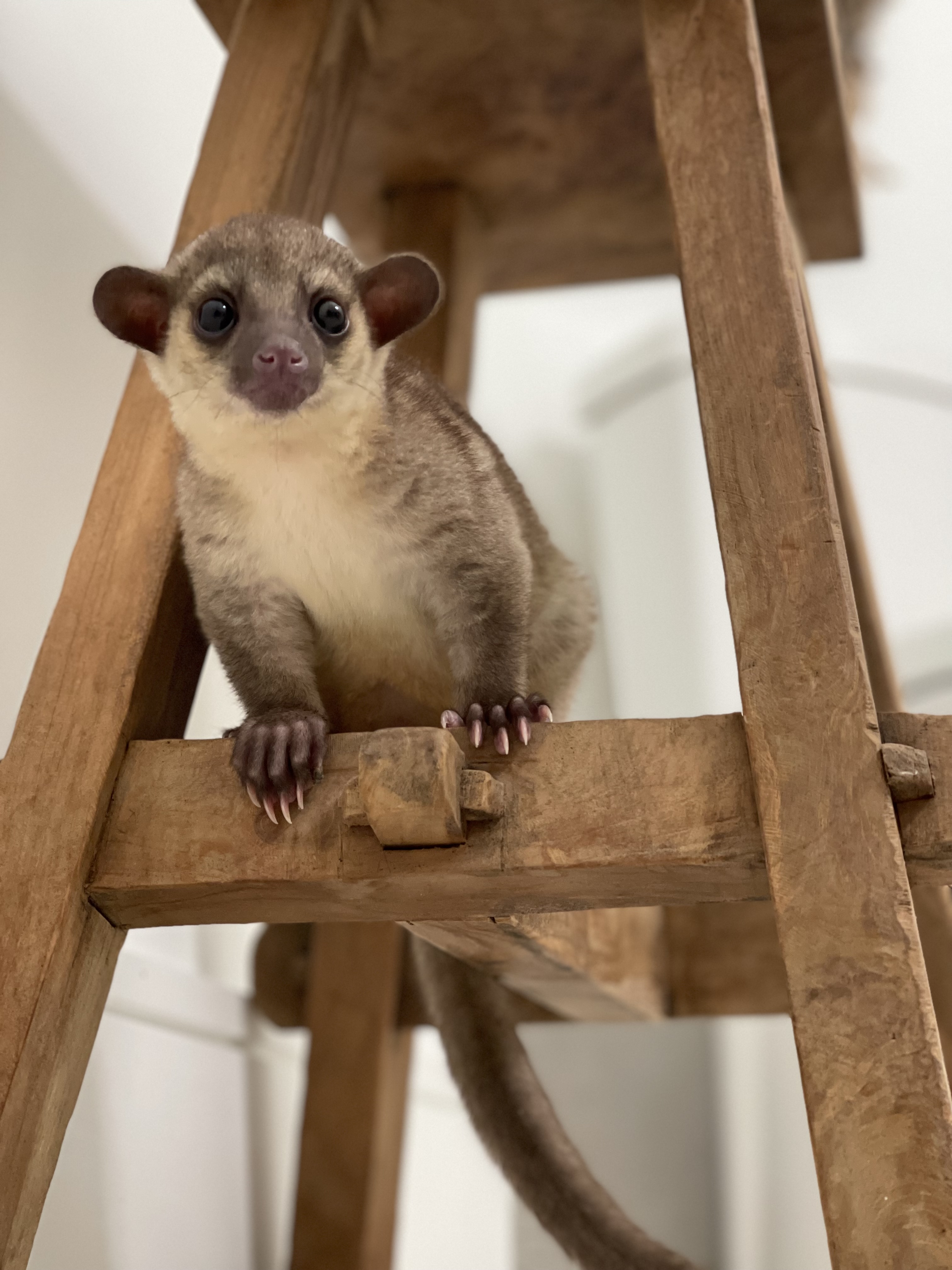JouJou came to Mandalay Farms from another local zoological facility at 6 weeks old. She is notable for her pink nose.


Kinkajous are arboreal rainforest mammals that live in Central and South America. Like Lemurs, Kinkajous are frugivores (fruit eaters). Although commonly mistaken for monkeys, kinkajous are in the same family as raccoons, coatimundis and ringtails.
In the wild kinkajous have a lifespan average of 29 years but can live up to 40 years in captivity.
Looking a bit like a monkey, kinkajous are often mistakenly called primates. They do have many traits and features like those of primates. But kinkajous are carnivores in the family Procyonidae, which includes raccoons, coatis, ringtails, and olingos.
The kinkajou’s prehensile tail is longer than its head and body and is thickly furred. Their dense, wooly fur acts as a raincoat to help keep a kinkajou dry. Kinkajous small, hand-like feet have fingers that are a bit webbed and with extremely sharp little claws. Their back feet can rotate, making it easy for them to navigate climbing and descending trees.
Kinkajous are 32 inches long at maturity and can weight 4.5-9.5 pounds.
Female Kinkajous reach sexual maturity at 27 months and males are sexually mature at 18 month.
Gestation is 98-120 days. Kinkajous generally give birth to one offspring (twins are rare) weighing 6 ounces at birth.
A female kinkajou takes full responsibility for caring for her young. After one or two weeks, the baby’s eyes open. It begins to eat solid food at eight weeks. By this time, the youngster can hang by its tail. It is able to climb with confidence when about three months old. Young males stay with their mother until they are about 18 months old; females stay with their mother until they are about two years old.
Social groups usually contain two adults males, an adult female and offspring. They generally spend their days sleeping together in a hole of a tree. At dusk they groom each other and socialize before departing to forage alone.
Kinkajous are opportunistic frugivores (fruit eaters) who eat whatever fruit is abundant. Figs are a favorite. They may also supplement their diet in the wild with insects, flowers and nectar.
At Mandalay Farms our Kinkajous receive a diet of insectivore, Mazuri browse, Mazuri Omnivore biscuit, mealworms, fruit (papaya, fig, apple, cantaloupe, grapes, banana), boiled eggs and occasionally corn on the cob and carrots.
Kinkajous can be quite noisy with their high-pitched barks, squeaks, and hisses. They screech and bark all around the forest, earning them yet another nickname: la llorona, Spanish for the crying woman.
A softer vocalization that is often heard sounds more like a sneeze.
Kinkajous are the only species of the genus Potos
A group of Kinkajous is called a convergence or a troop.
Kinkajous and binturongs are the only two carnivores that have a prehensile tail. The tail is for balance, to hold onto branches while reaching for food, and even to snuggle with while sleeping. Kinkajous can hang by the tip of their tail, then turn their body in such a way that they can climb back up their own tail!
Kinkajous have a 5-inch-long (13 centimeters) tongue that can reach inside flowers or beehives for tasty honey or nectar. Their short, dense fur provides a natural protection from bee stings.